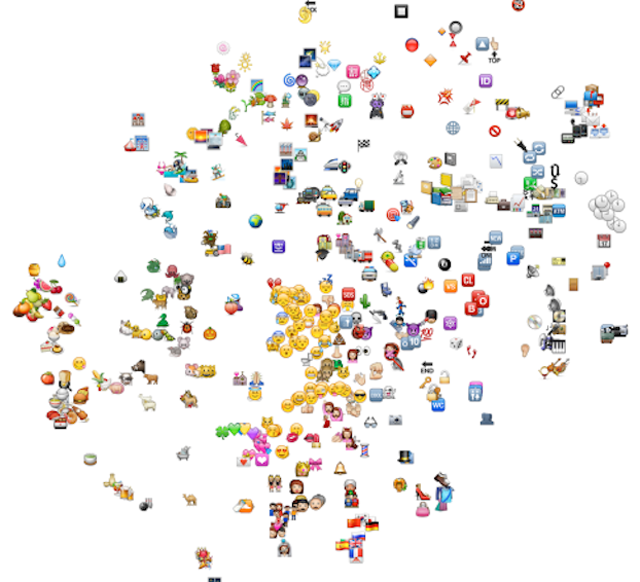There’s no question emojis have become wildly popular. But on Instagram, the familiar happy faces, hearts and kissing lips are more than just a cute shorthand. They’re on their way to becoming the dominant, universal form of communication.
“It is a rare privilege to observe the rise of a new language,” Thomas Dimson, a software engineer on Instagram’s data team, wrote in a company blog post on Friday. “Emoji are becoming a valid and near-universal method of expression in all languages.”
According to the company, emoji usage on Instagram has risen steeply since its introduction on iOS keyboards in 2011, and again on Android keyboards in early 2012. As of March 2015, nearly half of all text-based communications over Instagram contained emoji. Finland is leading the emojification of Instagram’s dialect, using the pictorial shorthand in a full 60 per cent of all text.
The simple, character-based emoji system that’s woven itself into the fabric of our digital lives is having linguistic repercussions. Even as our ability to express ourselves with emoji is limited by the number of symbols available, users are finding new ways to communicate, by pairing multiple emoji together to form rudimentary “sentences” or sentiments. Analysts at Instagram are trying to quantify this effect, by writing algorithms that predict the context around a given emoji and making a guess at the symbol’s meaning. Running these algorithms through massive batches of Instagram text, they’re identifying groups of semantically similar words and internet slang that map onto a single emoji.
For instance, the thumbs-up emoji (ranked 9th in emoji usage) is associated with a wide range of meanings: #keepitup, #fingerscrossed, aswell, haha, #impressed, #yourock, lol, #greatjob, bud, #goodjob, awesome, good, #muchlove, #proudofyou, job, #goodluck. Even Instagram’s many colored heart emoji’s all have different linguistic associations.
To visually examine the relationship between many different emoji, Instagram researchers used a statistical ordination technique that maps the characters in x-y coordinate space based on their (English language) meanings. Emoji that cluster together in this plot have a more similar linguistic association:

So many fascinating questions arise here, all of which I’m sure will keep linguists busy for years to come. As we continue to add new emojis to our digital dialect, how will the extra symbols shape our ability to communicate? Do most emojis hold similar meaning from language to language? If so, can emojis truly become a universal form of communication?
Perhaps most importantly: Is the replacement of complex sentences and ideas with simple, pictorial characters a good thing? Or is the disappearance of written words diminishing our ability to express ourselves? These are questions we haven’t really paused to consider. But, as Mike Isaac writes for the New York Times, if there was any digital ecosystem where the linguistic experiment was bound to happen, it was Instagram:
Instagram itself is a means of expression that does not require the use of words. The app’s meteoric rise has largely been attributed to the power of images, the ease that comes, for instance, in looking at a photo of a sunset rather than reading a description of one.
We may still have a lot to learn about our new language, but I think we’ve got time. Emojis, it seems, are here to stay.
